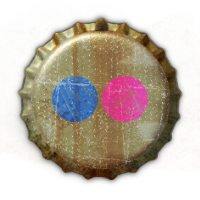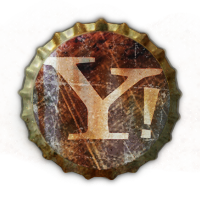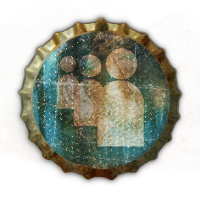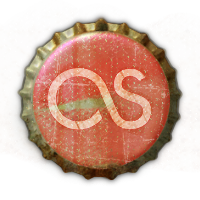Transcend microSDHCカード 32GB Class10 変換アダプタ無し (無期限保証) TS32GUSDC10
<仕様> 容量:32GB サイズ:11mm×15mm×1mm 動作電圧:2.7~3.6V 動作環境温度:-25℃~85℃ 耐久性:10,000回の抜き挿しサイクル 重量:0.4g※2 製品の仕様及び外観は、予告なしで変更する場合がありますのでご了承下さい。※実際の商品は写真と異なる場合があります。 警告・本製品へ保存されたデータが消失、破損した事による被害については、弊社ではいかなる責任も負いかねますので、予めご了承ください。・本製品のデータの回復作業はお受けしておりませんので、大切なデータは他のメディア

【本文抜粋】
2013年12月17日 10時 火曜日feat. D.O next 続き>>
Kids Books: "Ninjas! A Fun Guide Book For Kids Wanting To Become a Ninja" (Nonfiction Books for Kids, FREE eBook Included)
Kids Books About Ninjas are Cool!
LEARN HOW TO BECOME A NINJA?
Check out the Video Trailer HERE to answer why you need to buy this book!
Stories for Kids Ages: 9 and up | Grade Level: 5 and up
Good books for kids are not easy to find, but if you think you have what it takes to become a Ninja, then you NEED to read this one!
Many nonfiction kids books are boring, but I promise you that you will not be bored with this one. You've seen Ninjas in movies and cartoons and they're COOL. But these are just made up things, because not all Ninjas wore black or jumped down off of buildings to save the day with their swords. The actual Ninjas during the 14th Century in Japan were secret people who dressed just like everyone else so they could blend in and spy on them. Sure, sometimes they did wear black so they would not be seen, and sometimes they did have to fight. Ninjas spent years training on things like sneaking up on people or wearing disguises. They also were very skilled at fighting and using weapons they made themselves.
Did you know that there are Ninjas all around us today?
Can you name any modern day Ninja organizations or clubs? If you think about it I'll bet you can. I'll give you a hint... What organization goes through a lot of training to learn how to fight and sneak up on people? You'll find the answer in this book for kids.
In this kids book you will learn how to become a Ninja in 10 steps.
You will learn:
- History of the Ninjas
- The difference between a Samurai and a Ninja
- The first Ninja schools
- How they trained to become a Ninja
- Different roles of a Ninja and what they did
- Weapons that the Ninja used
- The modern Ninja - who are they today
- & Finally, the 10 steps that YOU can take to become a Ninja
This non fiction kids book includes everything you need to start your own journey to being a real Shinobi, that's Ninja in Japanese.
Remember kids books about Ninjas are COOL!

[ショップ情報引用]
2013年12月17日 06時 火曜日feat. D.O Reloaded 続き>>
RAINY COCOA(Spanish) 01
An ordinary college student, Aoi Tokura, was having a bad day.
It was so bad as he was told to be ugly by a good-looking guy on the train.
Walking down the street in rain, Aoi found a small 1, but cozy cafe, Rainy Color.
He started to work as a part time as he enjoyed a cup of hot chocolate he was served.
Then a guy came into Rainy Color... it was Keiichi Iwase, the one who told Aoi was ugly!!??

「記事引用」
2013年12月16日 23時 月曜日feat. D.O リローデッド 続き>>
How to STEM: Science, Technology, Engineering, and Math Education in Libraries
During the past few years, groups like the President's Council of Advisors on Science and Technology, Center for Education have been placing great emphasis on the significance of STEM (science, technology, engineering, and math) education. In brief, the US is seen as falling behind the rest of the world in science and technology education. In response, the curricula have been revised in many educational institutions and school districts across the country. It is clear that for STEM to be successful, other community organizations, most particularly libraries, need to be closely involved in the process. Library staff realize the importance of getting involved in STEM education, but many have difficulty finding comprehensive information that will help them plan and successfully implement STEM direction in their organization. This book is designed to meet that need. It is timely and relevant. How to STEM: Science, Technology, Engineering, and Math Education in Libraries is by and for libraries who are involved in contributing efforts into advancing these subjects. It is organized in 9 parts including funding, grant writing, community partnerships, outreach, research, and examples of specific programming activities. Authors are drawn from the professional staffs of educational institutions, libraries, and non-profit organizations such as science museums.
The book contains eight parts, each emphasizing a different aspect of how to succeed with STEM. Part 1 emphasizes how hands-on activities that are both fun and educational can be used to further STEM awareness. Parts 2 and 3 contain chapters on the uniting of STEM with Information Literacy. Innovative collection development ideas are discussed in Part 4 and Part 5 focuses on research and publishing. Outreach is the theme of Part 6 and the programs described in these chapters offer an array of ways to connect with students of all ages. The final section of How to STEM: Science, Technology, Engineering, and Math Education in Libraries addresses the funding of these programs.
Librarians of all types will be pleased to discover easy-to-implement suggestions for collaborative efforts, many rich and diverse programming ideas, strategies for improving reference services and library instruction to speakers of English as a second language, marketing and promotional tips designed to welcome multicultural patrons into the library, and much more.

「キャッチコピー引用」
2013年12月16日 21時 月曜日feat. D.O フェニックス 続き>>
2013/12/16の記事
How to STEM: Science, Technology, Engineering, and Math Education in Libraries
During the past few years, groups like the President's Council of Advisors on Science and Technology, Center for Education have been placing great emphasis on the significance of STEM (science, technology, engineering, and math) education. In brief, the US is seen as falling behind the rest of the world in science and technology education. In response, the curricula have been revised in many educational institutions and school districts across the country. It is clear that for STEM to be successful, other community organizations, most particularly libraries, need to be closely involved in the process. Library staff realize the importance of getting involved in STEM education, but many have difficulty finding comprehensive information that will help them plan and successfully implement STEM direction in their organization. This book is designed to meet that need. It is timely and relevant. How to STEM: Science, Technology, Engineering, and Math Education in Libraries is by and for libraries who are involved in contributing efforts into advancing these subjects. It is organized in 9 parts including funding, grant writing, community partnerships, outreach, research, and examples of specific programming activities. Authors are drawn from the professional staffs of educational institutions, libraries, and non-profit organizations such as science museums.
The book contains eight parts, each emphasizing a different aspect of how to succeed with STEM. Part 1 emphasizes how hands-on activities that are both fun and educational can be used to further STEM awareness. Parts 2 and 3 contain chapters on the uniting of STEM with Information Literacy. Innovative collection development ideas are discussed in Part 4 and Part 5 focuses on research and publishing. Outreach is the theme of Part 6 and the programs described in these chapters offer an array of ways to connect with students of all ages. The final section of How to STEM: Science, Technology, Engineering, and Math Education in Libraries addresses the funding of these programs.
Librarians of all types will be pleased to discover easy-to-implement suggestions for collaborative efforts, many rich and diverse programming ideas, strategies for improving reference services and library instruction to speakers of English as a second language, marketing and promotional tips designed to welcome multicultural patrons into the library, and much more.

「キャッチコピー引用」
2013年12月16日 21時 月曜日feat. D.O フェニックス 続き>>
How to STEM: Science, Technology, Engineering, and Math Education in Libraries
During the past few years, groups like the President's Council of Advisors on Science and Technology, Center for Education have been placing great emphasis on the significance of STEM (science, technology, engineering, and math) education. In brief, the US is seen as falling behind the rest of the world in science and technology education. In response, the curricula have been revised in many educational institutions and school districts across the country. It is clear that for STEM to be successful, other community organizations, most particularly libraries, need to be closely involved in the process. Library staff realize the importance of getting involved in STEM education, but many have difficulty finding comprehensive information that will help them plan and successfully implement STEM direction in their organization. This book is designed to meet that need. It is timely and relevant. How to STEM: Science, Technology, Engineering, and Math Education in Libraries is by and for libraries who are involved in contributing efforts into advancing these subjects. It is organized in 9 parts including funding, grant writing, community partnerships, outreach, research, and examples of specific programming activities. Authors are drawn from the professional staffs of educational institutions, libraries, and non-profit organizations such as science museums.
The book contains eight parts, each emphasizing a different aspect of how to succeed with STEM. Part 1 emphasizes how hands-on activities that are both fun and educational can be used to further STEM awareness. Parts 2 and 3 contain chapters on the uniting of STEM with Information Literacy. Innovative collection development ideas are discussed in Part 4 and Part 5 focuses on research and publishing. Outreach is the theme of Part 6 and the programs described in these chapters offer an array of ways to connect with students of all ages. The final section of How to STEM: Science, Technology, Engineering, and Math Education in Libraries addresses the funding of these programs.
Librarians of all types will be pleased to discover easy-to-implement suggestions for collaborative efforts, many rich and diverse programming ideas, strategies for improving reference services and library instruction to speakers of English as a second language, marketing and promotional tips designed to welcome multicultural patrons into the library, and much more.

「キャッチコピー引用」
2013年12月16日 21時 月曜日feat. D.O フェニックス 続き>>








